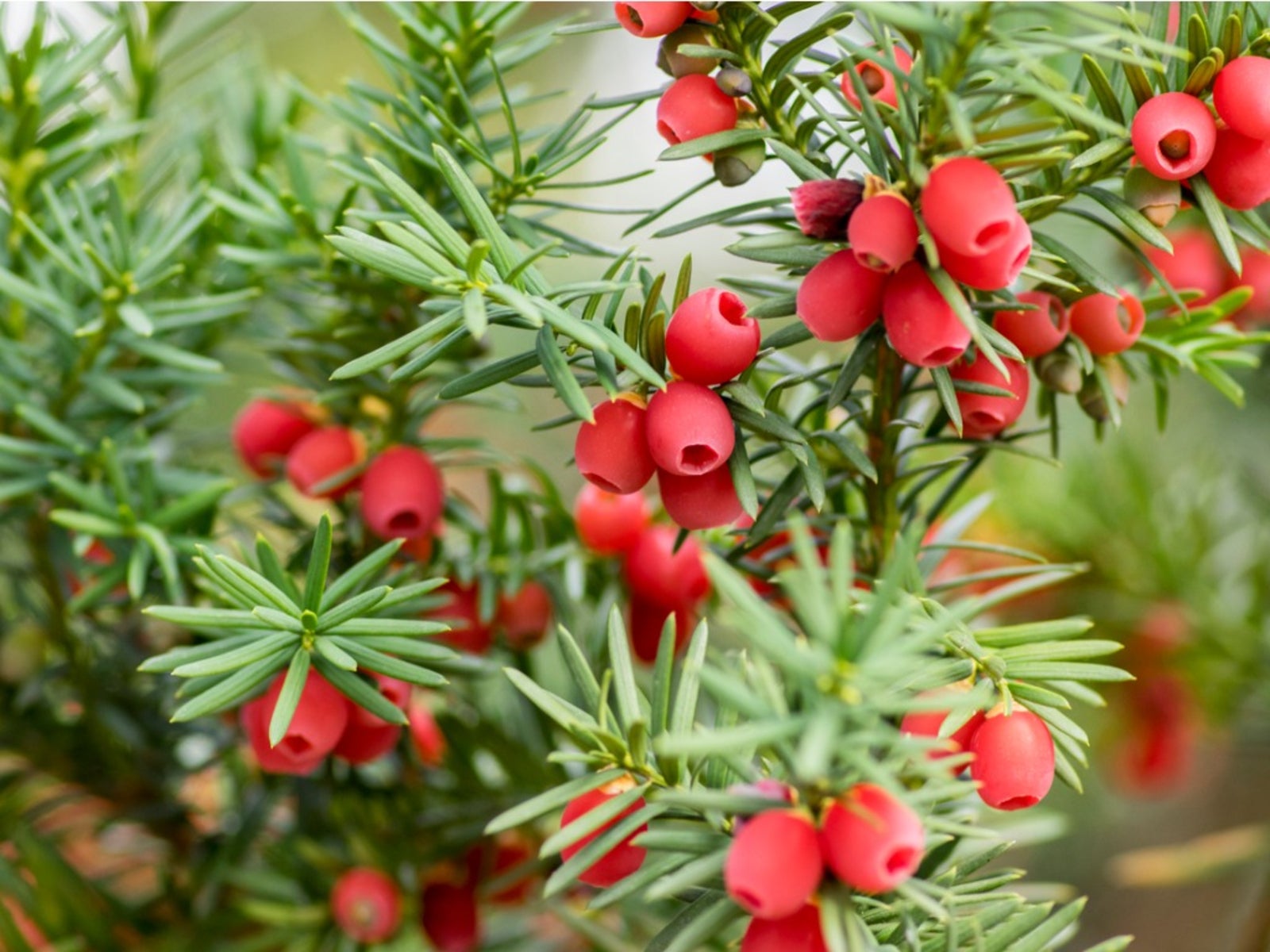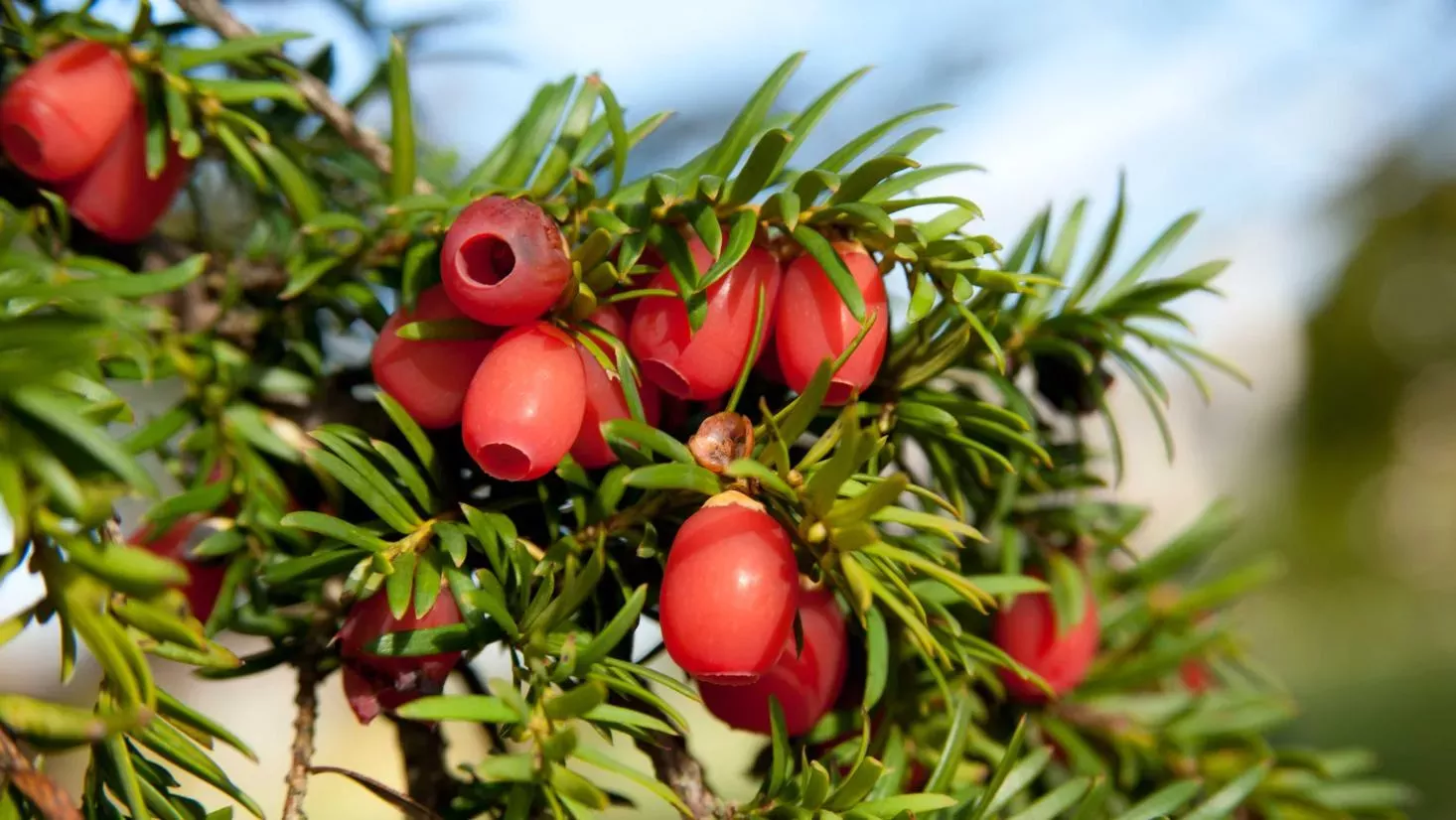“`html
The Enduring Yew: A Deep Dive into Taxus
The Enduring Yew: A Deep Dive into Taxus
The yew, a genus of coniferous trees and shrubs known as Taxus, holds a unique and often paradoxical place in human history and the natural world. Revered for its longevity and resilience, yet feared for its potent toxicity, the yew has woven its way into folklore, medicine, and artistry across cultures and millennia. This article will explore the multifaceted nature of the yew, from its botanical characteristics and ecological significance to its cultural symbolism and practical applications.
Botanical Characteristics: An Ancient Lineage
Yews are members of the family Taxaceae, a relatively small group of conifers distinguished by their aril-covered seeds rather than cones. These slow-growing trees are typically evergreen, with needle-like leaves arranged spirally on the shoots. The bark is often reddish-brown, peeling in thin, papery scales. The most distinctive feature, however, is the aril, a fleshy, cup-shaped structure that surrounds the seed. This bright red (or occasionally yellow) aril is the only non-toxic part of the yew, attracting birds that aid in seed dispersal.
Species Diversity and Distribution

The genus Taxus comprises several species, including:
Taxus baccata (European Yew)
This is perhaps the most well-known species, native to western, central, and southern Europe, northwest Africa, and southwest Asia. It is renowned for its longevity, with some specimens estimated to be thousands of years old. The European yew has played a significant role in European folklore and history.
Taxus brevifolia (Pacific Yew)
Native to the Pacific Northwest of North America, this species gained prominence due to its bark being a source of taxol, a powerful anti-cancer drug. However, overharvesting led to its decline, highlighting the need for sustainable practices.
Taxus canadensis (Canadian Yew)
Found in eastern North America, this species is typically a shrub rather than a tree. It is more tolerant of shade than other yews and plays a vital role in forest ecosystems.
Taxus cuspidata (Japanese Yew)

Native to Japan, Korea, northeast China, and southeast Russia, this species is widely cultivated as an ornamental plant. It is known for its dense, dark green foliage and tolerance of pruning.
Taxus floridana (Florida Yew)
A rare and endangered species native to a small area in Florida, this yew is a shrub or small tree, distinguished by its unique genetic makeup and vulnerability.
The distribution of yews across various continents reflects their adaptability to diverse climates and habitats, from temperate woodlands to mountainous regions.
Ecological Significance: A Keystone Species
Yews play crucial roles in their respective ecosystems. Their dense foliage provides shelter and nesting sites for various birds and small mammals. The arils are a vital food source for birds, which in turn help disperse the seeds. Yews can also contribute to soil stabilization and nutrient cycling.
Challenges and Conservation

Despite their resilience, yews face numerous challenges, including habitat loss due to deforestation and land-use changes. Overharvesting for timber and medicinal purposes has also impacted populations of certain species, particularly the Pacific yew. Climate change poses an additional threat, altering temperature and precipitation patterns, which can affect yew growth and survival.
Conservation efforts are essential to protect yew populations and their ecological roles. These efforts include establishing protected areas, promoting sustainable harvesting practices, and conducting research to understand the impacts of climate change and other threats.
Toxicity and Medicinal Uses: A Double-Edged Sword
All parts of the yew, except the aril, contain taxanes, a group of toxic compounds. Taxanes, particularly taxine alkaloids, can cause severe cardiac and respiratory problems if ingested. However, this toxicity has also been harnessed for medicinal purposes.
Taxol and Cancer Treatment
The discovery of taxol in the bark of the Pacific yew revolutionized cancer treatment. Taxol, now known as paclitaxel, is effective against various cancers, including ovarian, breast, and lung cancer. However, the initial reliance on harvesting bark from wild trees led to concerns about the species’ conservation. Today, taxol is produced semi-synthetically or through cell culture, reducing the pressure on wild yew populations.
Traditional Uses and Other Medicinal Applications
Historically, yew extracts have been used in traditional medicine for various ailments, including rheumatism, fever, and epilepsy. However, due to the toxicity of yew, these practices were often risky and required careful dosage control. Modern research continues to explore the potential of yew compounds for other medicinal applications, such as treating inflammation and viral infections.
Cultural Symbolism: A Tree of Life and Death
The yew has held deep symbolic meaning across cultures, often associated with both life and death. Its longevity and evergreen nature have made it a symbol of immortality and eternity. Conversely, its toxicity has linked it to death and the underworld.
Folklore and Mythology
In Celtic and Germanic traditions, the yew was considered a sacred tree, often planted in burial grounds and associated with ancestral spirits. The yew’s ability to regenerate from its own decaying wood symbolized the cycle of life, death, and rebirth. In Greek mythology, the yew was associated with Hecate, the goddess of witchcraft and the night.
Religious Significance
Yews have been planted in churchyards throughout Europe for centuries, often predating the churches themselves. This practice may have originated from pre-Christian traditions, where yews were considered sacred sites. The yew’s association with death and resurrection may have also contributed to its placement in churchyards.
Literary and Artistic Representations
The yew has appeared in numerous literary works and artistic creations. Its somber and mystical qualities have made it a popular motif in poetry, painting, and sculpture. From the haunting imagery of yew trees in Gothic literature to the intricate carvings of yew wood in medieval art, the yew continues to inspire artistic expression.
Practical Applications: From Bows to Ornamentals
Beyond its symbolic and medicinal significance, the yew has been used for various practical purposes throughout history.
Bowmaking
Yew wood, particularly that of the European yew, has been highly prized for its strength and flexibility, making it ideal for crafting bows. The English longbow, a weapon that played a crucial role in medieval warfare, was often made from yew wood. The yew’s resilience and elasticity allowed for the creation of powerful and accurate bows.
Ornamental Uses
Today, yews are widely cultivated as ornamental plants in gardens and landscapes. Their dense foliage, tolerance of pruning, and ability to grow in various shapes make them ideal for hedges, topiary, and specimen trees. Numerous cultivars have been developed, offering variations in leaf color, growth habit, and size.
Other Uses
Yew wood has also been used for crafting furniture, tools, and other objects. Its durability and attractive grain make it a valuable material for woodworking. Historically, yew bark has been used for tanning leather and producing dyes.
Conclusion: The Enduring Legacy of the Yew
The yew, with its complex interplay of life and death, toxicity and healing, has left an indelible mark on human culture and the natural world. From its ancient lineage and ecological significance to its cultural symbolism and practical applications, the yew continues to fascinate and inspire. As we face environmental challenges and seek sustainable solutions, the yew’s resilience and adaptability offer valuable lessons. By understanding and appreciating the multifaceted nature of this remarkable tree, we can ensure its enduring legacy for generations to come.
“`
